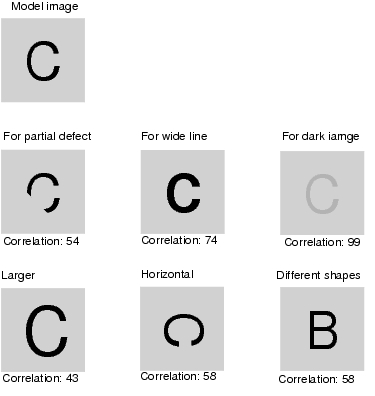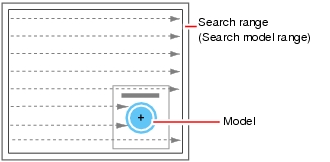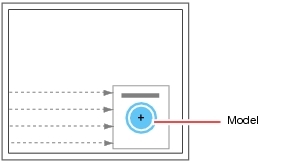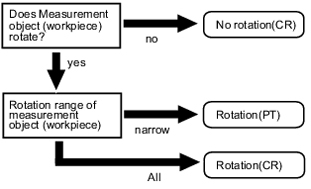Search Processing Mechanism
Reference image patterns are registered as models and then search is performed using the parts of input images that most resemble the models. The degree of similarity is represented with a correlation value, and inspection for defects and different parts being mixed in can be performed.
Search Detection Method
With search processing, there are two types of detection methods: Search by "Correlation (CR)" and search by "Shape (PT)".
The detection method can be selected by changing the "With rotation" settings for each processing item.
The detection method can be selected by changing the "With rotation" settings for each processing item.
Search Speed
For processing items to perform search processing such as [Search] and [Classification], you can specify the search processing speed by through the model parameter items "Stable", "Precise", and/or "Skipping angle". If the value specified for "Stable" or "Prec." is small or if the value for "Skipping angle" is large, the processing speed can be increased since the amount of information for the models will be decreased during the search. In contrast, if the values specified for "Stable" or "Precise" are large or if the value for "Skipping angle" is small, the processing speed is slow because search is performed without the amount of model information being reduced. Specify appropriate values for "Stable", "Precise", and "Skipping angle" according to the measurement conditions.
Correlation value
With processing items that use search processing, judgement is performed through correlation values.
Correlation values are used to check the consistency (degree of similarity) between actual measurement images and reference model images. If portions of a measured image are missing or if shapes are different, the correlation value is lower.

Search Angle Range, Skipping Angle
These are values, based on the model registration image, that indicate the allowable rotation interval (skipping angle) and overall maximum rotation range for the model (angle range).Search is performed for objects that most resemble these acceptable models.






